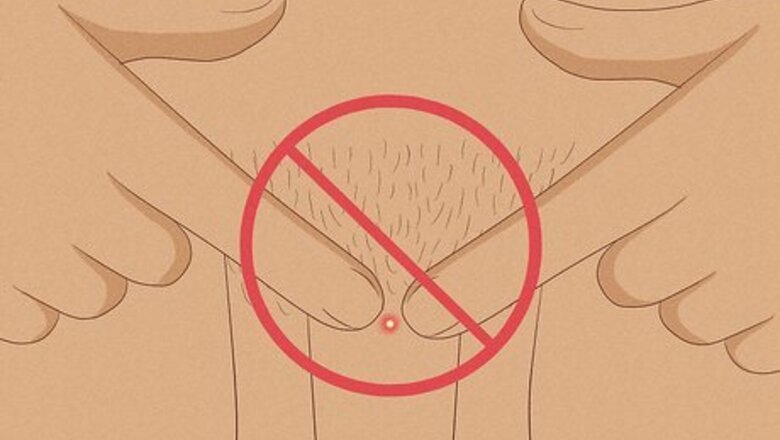
views
- Shower and wash your pubic area daily (especially after exercising) to clear up and prevent pimples. Wash twice daily with antibacterial soap for bad breakouts.
- Wear cotton underwear to help keep your pubic area dry and ensure it gets plenty of air exposure, as too much moisture causes pimples to form.
- Try oral acne medication if your doctor recommends it. The skin in your pubic area may be too sensitive for normal over-the-counter acne treatments.
Treating Pimples on Male Pubic Areas
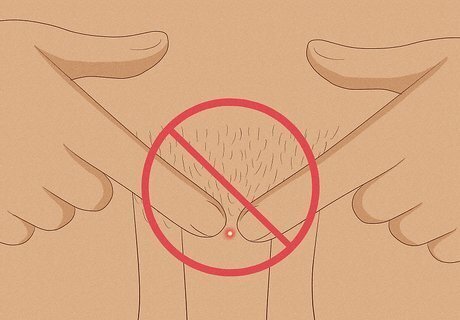
Let the pimple heal by itself without touching or popping it. Most pimples go away entirely on their own—no need to treat them! Do your best to keep the area clean and dry, and let your body heal. Scratching and popping pimples (especially on your pubic area) may cause an infection, permanent scarring, or cause the bacteria to spread and form more pimples, so leave your pimples alone as best you can. Many pimples go away by themselves within 3 to 7 days, though deeper pimples (which don’t have a head and feel hard to the touch) may take a few weeks to heal. You may be wondering, “Is it possible or normal to get a pimple in my pubic area?” The answer is: absolutely. Pimples can form anywhere you have skin pores, and they’re extremely common. That means pimples can appear anywhere on your body, from your scalp underneath your hair to your pubic area—regardless of gender.
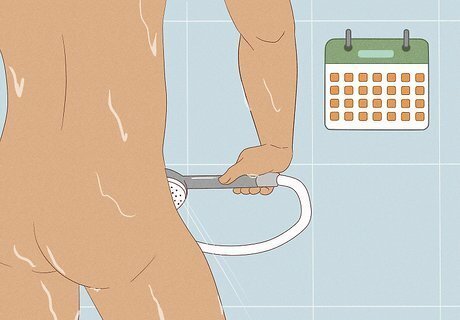
Take a shower every day (especially after working out). Regular showers remove any sweat and oil that has built up on your skin. The less oil and sweat on your skin (including your pubic area), the less likely you are to develop pimples there. While showering, gently scrub your pubic area with a loofah to clear away the dead skin cells there; this can unclog your pores and prevent future breakouts. It’s particularly crucial to shower right after working out since sweat easily forms while you’re exerting yourself.
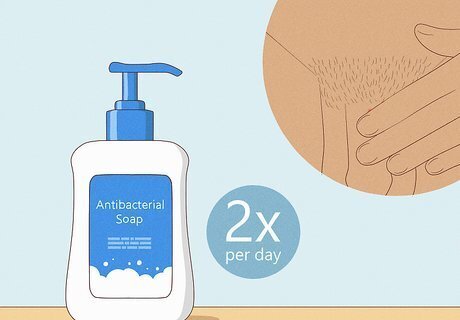
Wash the area with gentle antibacterial soap twice per day. Regardless of your normal shower schedule, it’s important to wash your pubic area and the particular spot where a pimple is forming twice per day. Use warm water (not too hot) and antibacterial soap to wash your pubic area. Make sure the soap you use is labeled antibacterial; regular cosmetic soaps may cause more inflammation. After you’ve washed your pubic area, rinse the soap away completely to avoid skin irritation. Then, be sure to gently but thoroughly dry the pimple and the affected area since dry, clean skin is less likely to develop pimples.

Wear underwear made with cotton rather than synthetic materials. Cotton is a super breathable material, allowing for easier air exchange, which is ideal for underwear. Cotton underwear prevents moisture from getting trapped around your pubic area, which in turn makes pimples less likely to form there. So, the next time you buy underwear, look for options made from cotton and steer clear of synthetic materials. Synthetic materials to avoid include polyester, nylon, acrylic, rayon, and spandex. Synthetic fabrics are man-made materials created via a chemical process (as opposed to natural fabrics, which don’t require any chemical manufacturing).
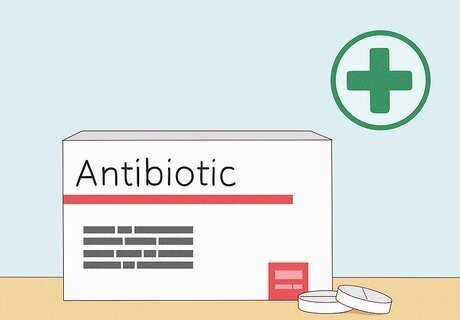
Take an acne medication orally if your doctor approves it. While most pimples can be treated with acne medicines and creams (usually containing either benzoyl peroxide or salicylic acid), the skin around your pubic area is much more sensitive. Normal over-the-counter acne creams could cause a rash, so if you feel you need medication, ask your doctor about an oral antibiotic to clear away the bacteria contributing to pimple outbreaks. Alternatively, ask your doctor about Isotretinoin, which is a prescription medication usually taken for severe acne.
What do pubic pimples look like?
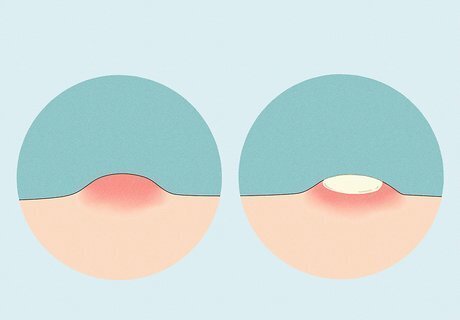
Most pimples look like raised red spots, sometimes with a white head. When you touch a pimple, it’ll typically feel like a hardened bump—and it may be tender to the touch. Some pimples just look like red spots, while others develop a “head,” which enables clogged sebum (oil), skin cells, and bacteria to get out of your skin as the pimple heals. Blackheads are pimples with black centers. They develop when a skin pore gets clogged with sebum and undergoes a chemical reaction; as the sebum is exposed to air, it gets oxidized and turns black. Whiteheads are pimples with white, protruding centers. They develop when a skin pore gets clogged with bacteria, but air can’t reach the bacteria, so it doesn’t undergo any chemical reaction. Alternatively, some pimples fill with pus. Normally, the pus drains away on its own. If you’re concerned, talk to your doctor about having it drained.
What causes pimples in the male pubic area?
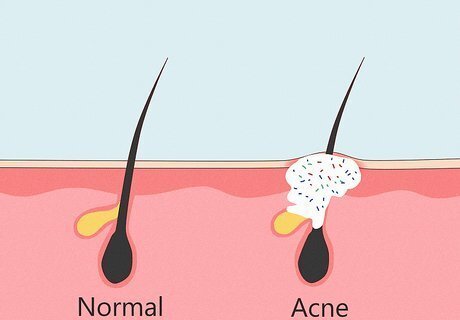
All pimples are the result of a clogged pore in your skin. Pores are small openings around your hair follicles and sweat glands. They mainly help gasses and liquids move through the surface of your skin. However, when a pore gets clogged—with oil, dirt, dead skin cells, or a mixture of all three—a pimple often forms in response. So, if you find a pimple on your pubic area, it’s because a pore on your skin is clogged. You may be more at risk of developing pimples if you: Skip showers Live in a humid climate Have oily skin Shave your pubic hair Wear tight-fitting underwear However, not every bump you might find around your pubic area is necessarily a pimple, so if it doesn’t fit the usual description, look for other causes of pimple-like bumps below.
Other Causes for Pimple-Like Bumps in Your Pubic Area
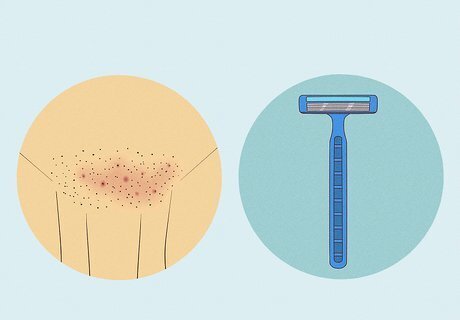
Razor burn Shaving with a razor can easily irritate your skin, especially the sensitive skin around your pubic area. Razor burn results in reddened, irritated skin (sometimes with minor cuts from the razor) and may also cause bumps to form around the site of the rash. This is because shaving with a razor sometimes causes ingrown hairs to form, which in turn causes bumps to form. Ingrown hairs are hairs that grow back into your skin instead of out, like they’re supposed to. They’re very common after both waxing and shaving. Razor burn often heals on its own, but it may also help to soothe the affected skin with an oatmeal-based body lotion in the meantime and use a fresh razor to avoid razor bumps.
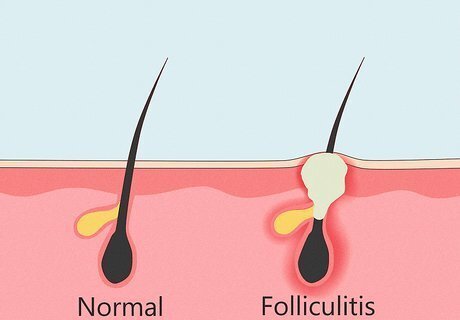
Folliculitis When one of your hair follicles (the structures within your skin that grow hair) becomes inflamed, it can cause red, pimple-like bumps to develop in the area called folliculitis. Folliculitis is itchy and sometimes painful, but mild cases often resolve on their own without treatment. If your folliculitis is persistent or keeps recurring, talk to your doctor about treatment. Folliculitis treatments typically involve using a topical antimicrobial product to clear away the existing bumps and prevent inflammation in the future.
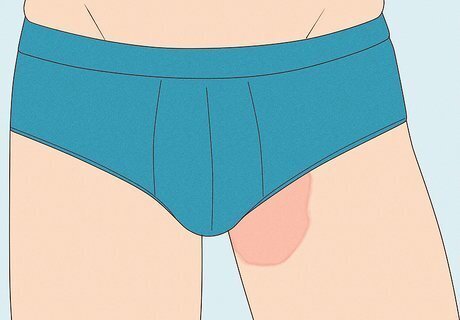
Jock itch Jock itch is a common fungal infection, especially among men who wear tight jeans or share clothes with other people. Symptoms of jock itch include itchy red patches with scaly borders around the groin (though not directly on your genitals), and the people at the highest risk for jock itch include athletes, overweight individuals, and those with diabetes. It's relatively easy to treat jock itch and often involves applying a topical antifungal cream to the affected area. Wearing loose, breathable cotton clothing can also help relieve and prevent jock itch.
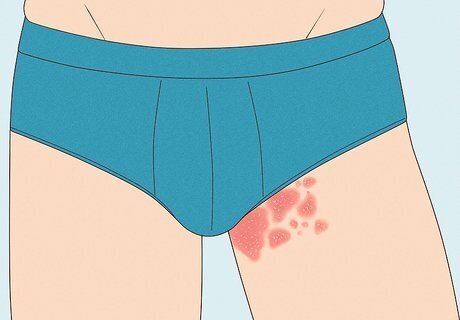
Eczema Eczema is a very common inflammatory condition that causes dry skin, rashes, scaly patches, blisters, and skin infections—though itchy skin is usually the most pronounced symptom. It most often affects areas with skin folds, like your hands, the backs of your knees, and the front of your elbows, but it’s very possible to get eczema in your pubic area as well. Eczema is not a serious condition and is easily treated at home, usually with moisturizers or topical steroids to relieve the itchiness.

Fordyce spot Fordyce spots (also called Tyson glands) are just visible sebaceous glands (which are the glands on your skin that secrete oil). They typically appear as small spots that are white or yellow, and you may spot them around the frenulum (the small tissue folds underneath the penis) in particular. However, Fordyce spots are completely harmless and don’t require treatment. Fordyce spots often form in clusters of around 50 to 100 at a time. Fordyce spots can also form in your mouth. If you know what they look like from having them in your mouth before, you may be able to identify them in your pubic area as well. While they’re completely benign, Fordyce spots can be removed using certain dermatologic procedures, like laser therapy.

Allergic contact dermatitis Allergic contact dermatitis is basically an allergic reaction when your skin is exposed to a chemical (either in your clothes or skincare products) that irritates your skin. Dermatitis normally appears as a rash or red, pimple-like bumps that may change to blisters in time. Generally, the condition starts to improve once you identify and stop coming into contact with the cause of the allergy. However, if you have allergic contact dermatitis, a doctor may also prescribe you antihistamines or steroids to reduce the inflammation.
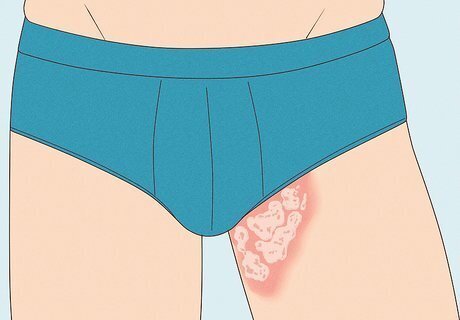
Psoriasis Psoriasis is a chronic, non-contagious condition that usually runs in families but may also be triggered by an infection, injury, or emotional stress. Symptoms of psoriasis include thickened, scaly, red skin patches. It can affect your pubic area, though it may also affect other areas of your body (such as your elbows, knees, back, or scalp). Though there’s no cure for psoriasis, there are many ways to treat and relieve it, including applying hydrocortisone cream, salicylic acid products, or skin moisturizers to the affected areas.

Molluscum contagiosum Molluscum contagiosum is a common skin condition that normally presents as tiny, dome-shaped bumps on your skin. It’s totally painless and normally goes away on its own; treatment is only needed for severe cases. The condition results from a viral infection and may be contracted through sexual intercourse or sharing clothes or towels with another person. Poor hygiene and living in a moist environment can both increase your risk of developing molluscum contagiosum. If you develop a severe case of the condition, your doctor will likely prescribe a prescription cream with imiquimod or tretinoin.
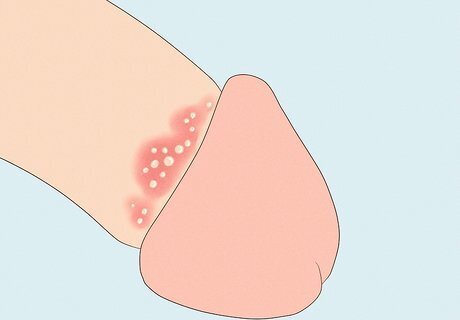
STIs Some pimple-like bumps in your pubic area may, in fact, be an STI (sexually transmitted infection)—potentially genital herpes, genital warts, or syphilis. If you contract an STI, pimples or sores may just be the first symptom. Look for other STI symptoms like pain, muscle aches, penile discharge, or a fever. Avoid all sexual contact until your doctor can do an evaluation and treat the condition. Genital herpes causes gray or white blisters with a red base to develop in your pubic area, though they may become open sores and crust over. They’re often painful and itchy and may also develop around your mouth. Genital warts are small, white, or flesh-colored bumps that tend to show up in the pubic area and vary in size, though they’re often cauliflower-shaped. They tend to disappear on their own but can also be treated with freeze and heat therapy. Syphilis presents as white or red ulcers, though the ulcers are usually painless. However, it’s important to treat syphilis with antibiotics if you develop it, so talk to your doctor if you suspect you may have it.
When to See a Doctor
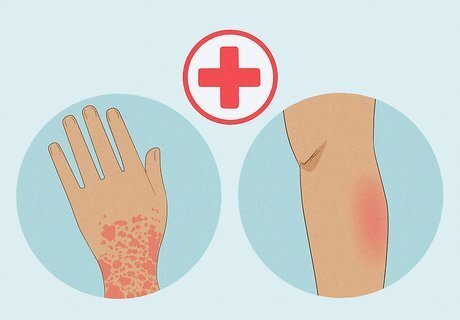
Talk to a doctor if you develop other symptoms related to the pimples. By themselves, pimples are completely harmless. However, if you’ve been actively treating a pimple for over a week and it's not going away, talking to your doctor about it may be a good idea. Alternatively, if you’re not sure it really is a pimple, talk to your doctor—it may be a different skin condition or STI. Finally, contact your doctor if you notice any additional symptoms, such as: Skin rashes Muscle aches Sores developing in other parts of your body Swelling in other areas of your body Fatigue Headaches Fever




















Comments
0 comment